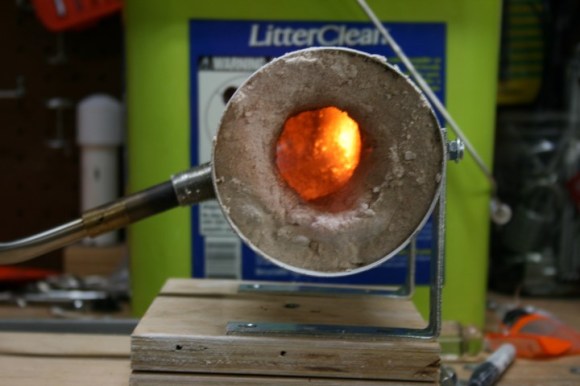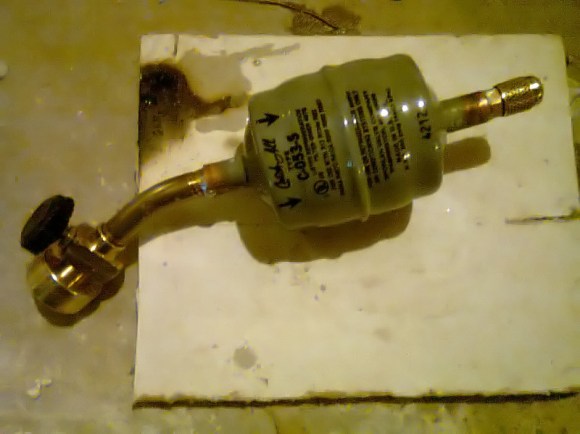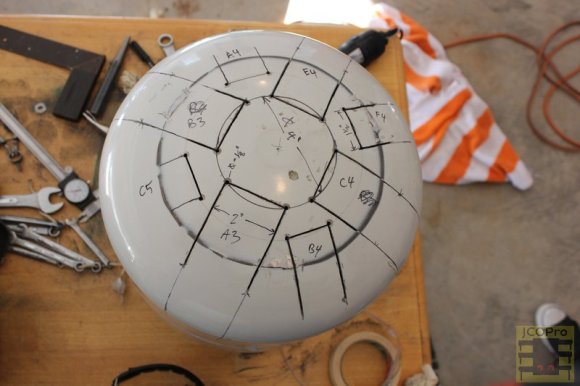
Everyone wants to be Iron Man these days, but without a spare arc reactor lying around, you’ll have to settle on building a backup suit component. [Xavier] documents his take on the wrist-mounted flamethrower in this dirt-cheap and unquestionably dangerous build. Cobbled together from parts found at a local hardware store, this glove has the typical “ready” setting with a small flame that, upon turning one’s wrist, erupts into a loud and large swath of flames. We suspect the mask worn in the video below doubles as identity protection and to prevent accidental hair conflagrations. Skip to the end for a demonstration.
Though not the first flamethrower build at Hackaday, [Xavier’s] is the only one with a guide and is certainly the cheapest. Be sure to look into the second generation of the Prometheus flame thrower and its subsequent third version that we featured a couple of years back. Not everyone’s flamethrower is wrist-mounted; some people put them inside a trombone. Remember, don’t try this at home.

















